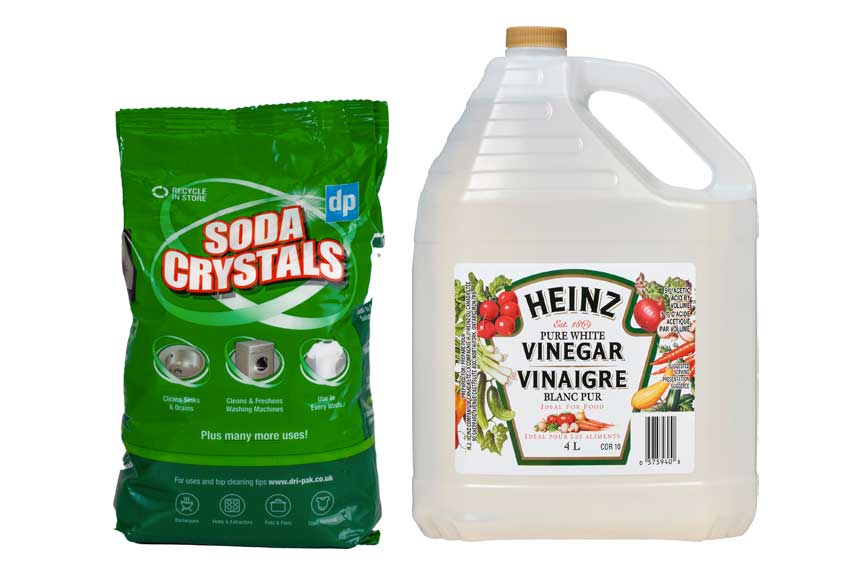Tel: 01474 876800 • Client Portal
- Who We Are
- What We Do
- Build
- Carpentry
- Building Works
- Commercial Flooring
- Commercial Glazing
- Commercial Locksmith
- Commercial Painting & Decorating
- Commercial Plastering
- Commercial Plumbing
- Commercial Refurbishment
- Commercial Roofing
- Design & Construction
- Electrical Installation
- Hard & Soft Landscaping
- Mechanical & Electrical
- Office Builders
- Office Fit Outs
- Office Heating
- Office Partitioning
- Office Relocation
- Site Management
- Maintain
- 24 Hour Helpdesk
- Access Control
- Air Conditioner Repair
- Air Conditioning Servicing
- Commercial Boiler Servicing
- Commercial Electricians
- Commercial Ground Maintenance
- Commercial Pest Control
- Commercial Property Maintenance
- Drain Unblocking
- Emergency Callouts
- Emergency Light Testing
- Facilities Management
- Fire Alarm Testing
- Fire Extinguisher Testing
- Fire Sprinkler Testing
- Fixed Wire Testing
- Handyman Service
- Lift Servicing
- Office Health & Safety
- PAT Testing
- Planned Preventative Maintenance
- Reactive Maintenance
- Roof Maintenance
- TMV Maintenance
- Water Hygiene
- Clean
- Build
- How We Do It
- Why Use Us
- Contact
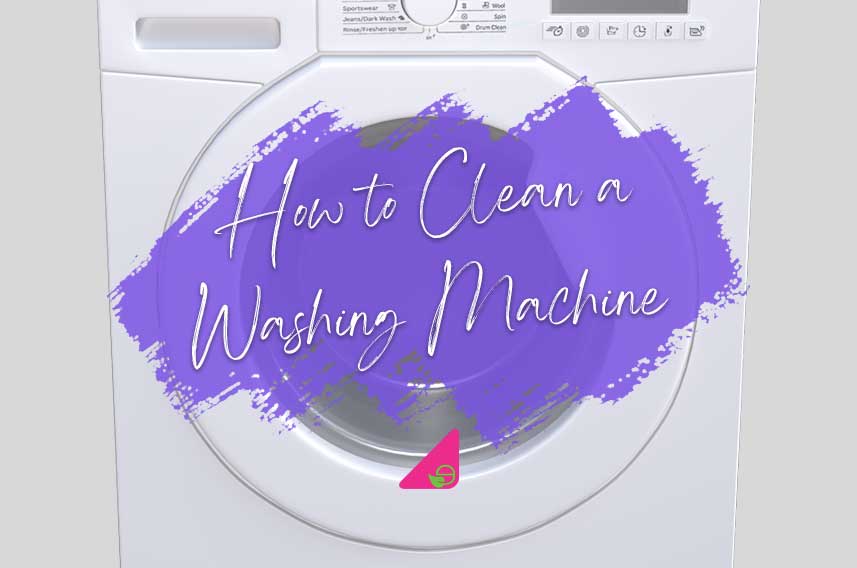
How to Clean a Washing Machine
Have you noticed your laundry not smelling as fresh as it used to lately?
Or has your washing machine developed a bad odour?
These are signs that your washing machine needs a deep clean.
Ideally you should do this before you notice such signs.
Regularly sanitising your washing machine is highly recommended, especially when considering how often it’s used to wash your clothes.
The following are some tips and solutions to deep clean your washing machine thoroughly.
Table of Contents
How Often Should You Clean a Washing Machine?
Washing machines should be cleaned on a regular basis, at least 4-6 times per year.
Proper hygiene is important to ensure that the appliance works properly.
Since it’s designed to clean your clothes, it’s even more important that the machine itself is suitably clean.
Hence, deep cleaning your washing machine once a month is highly recommended, especially if you use it on a daily basis.
Minor cleaning should be done after each wash.
This includes making sure that any standing water is dried away, and wiping any lint that may have remained stuck.
Once a week, it’s a good idea to give your washing machine a wipe with a gentle disinfectant.
Simply mix it with some water, and wipe inside the machine’s drum, around the seals and the door from both sides.
A hot wash should be run once a week to rinse the washing machine thoroughly, especially if you use a lot of fabric softener or other additives when washing your clothes.
Then, once a month, you should carry out a scheduled maintenance wash.
The washing machine should be left empty.
Then an over-the-counter washing machine cleaner should be applied, and a standard washing cycle at the hottest temperature selected.
Alternatively you could use vinegar, baking soda, bleach or other cleaners which we shall be outlining in more detail below.
Once every three to four months, you should also complement the above wash by also giving the detergent drawer and filter a thorough clean.
Shopping List
There are various things you will need to thoroughly clean your washing machine.
We tried to include all the items you could utilise to do this job properly, but the choice depends on what you prefer and what you feel works best for you.
- White vinegar
- Baking soda
- Bleach
- Washing machine cleaner
- Laundry detergent
- Dish soap
- Citric acid or ascorbic acid
- Sodium percarbonate or laundry bleach
- Soda crystals
- Epsom salts
- Old toothbrush
- Microfibre cloths or tea towels
- A scourer
- A bowl
- A tray
- A kettle
- Rubber gloves
Run the Hottest Cycle Whilst Empty
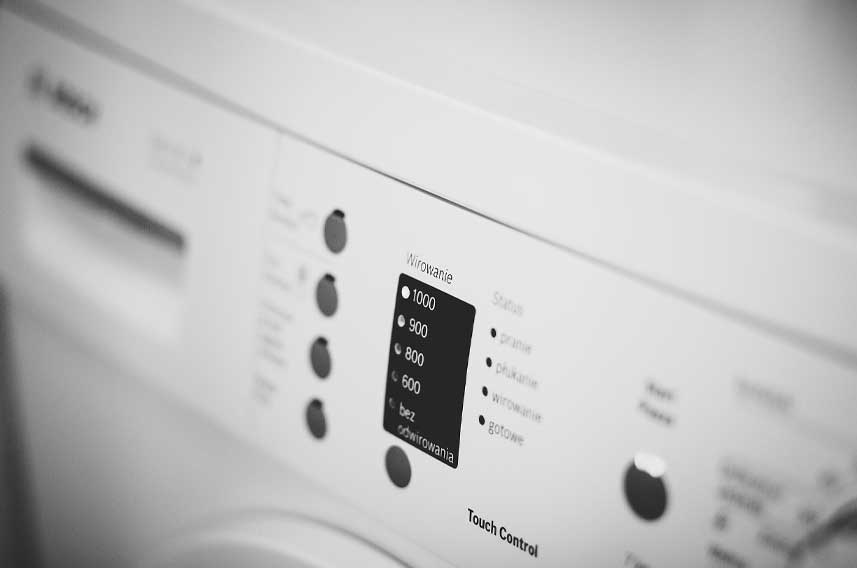
One of the most basic ways to clean a washing machine is to use a very hot water cycle.
This is because high temperatures offer greater sanitisation as germs will be killed.
So run the hottest possible cycle while the washing machine is empty.
Use a washing machine cleaner so that it can clean your washing machine well while the cycle is running.
Some washing machine models will have a dedicated cycle for this as well.
Cleaning with Washing Machine Detergent
You can run a maintenance clean and simply use the washing machine detergent that you normally use for your clothes.
That said, it’s better to opt for a natural and plant-based detergent.
These are usually marked as concentrated.
Washing pods are also a good option that you may wish to try out.
Cleaning the Detergent Drawer
The detergent drawer needs to be cleaned regularly as it will have a soapy residue build up, and possibly mold and mildew too.
Remove the detergent drawer carefully.
You may wish to check the instruction manual of the washing machine to do this easily and without causing any damage.
Once the drawer has been removed, rinse it under hot water.
Then, fill a bowl or sink with hot, soapy water, and scrub it using an old toothbrush or scourer.
Once you have removed the soap build-up and any mold, rinse it well and dry it with a tea towel.
Make sure to clean out the cavity before putting the drawer back in its place, as there will most likely be some hidden mold in that area.
Cleaning with Vinegar & Baking Soda
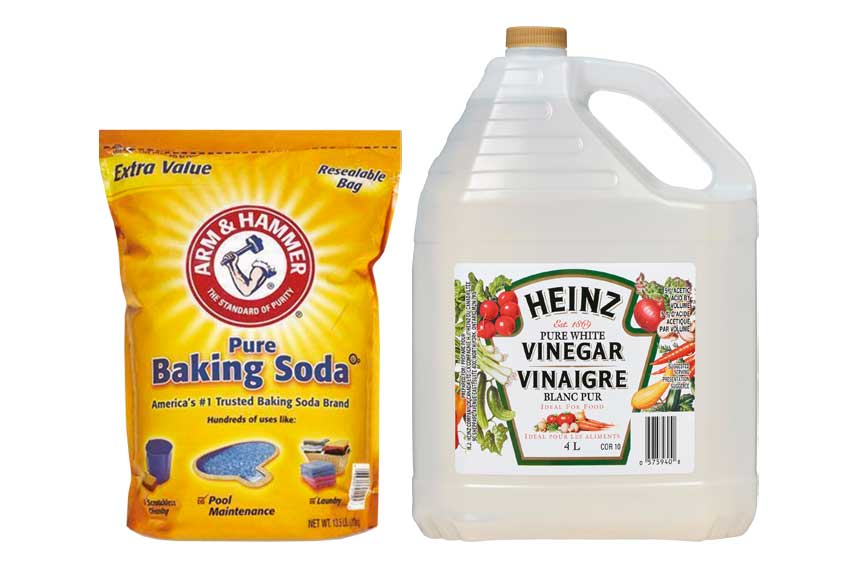
Their natural properties are ideal for sanitising too.
And it will also be cheaper than buying a specialised cleaning product.
In the case of top load washing machines, pour one cup of white vinegar directly into the drum, and run it on the hottest cycle.
The vinegary smell will disappear during the rinse cycle, so there’s no need to worry about that.
When the cycle is completed, add half a cup of baking soda to the drum and run the cycle again.
Once ready, clean the door seals and wipe dry the inside of the machine.
Leave the door open.
In the case of front load washing machines, it’s recommended to pour two cups of white vinegar in the detergent drawer.
Once the cycle is over, run it again, this time adding half a cup of baking soda in the drum.
Cleaning with Epsom Salts & Vinegar
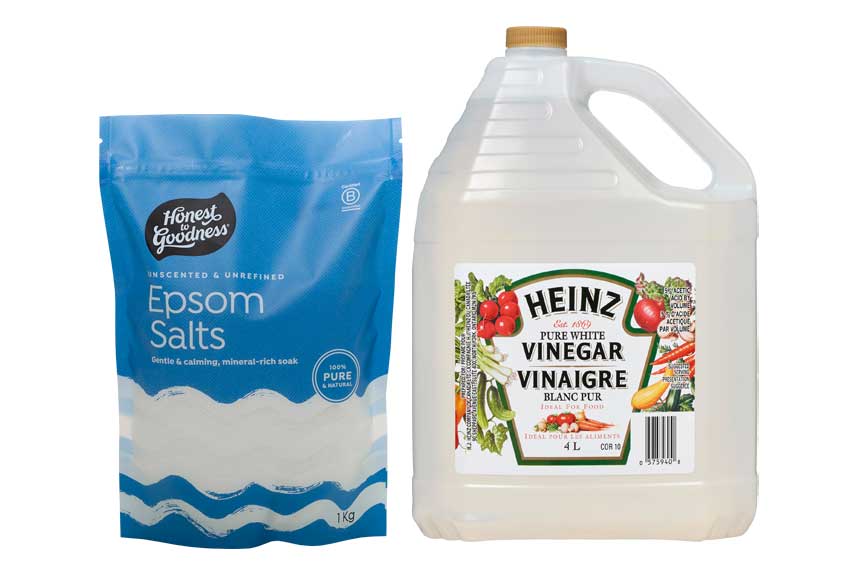
The chemical composition comprises magnesium, sulfate and oxygen.
Hence it is a natural antibacterial.
The washing machine will be well disinfected with this cleaning solution.
Simply add a cup of epsom salt to half a cup of vinegar.
You may also use water instead of vinegar.
Pour the mixture directly in the drum, and run on a very hot cycle.
It’s best to pause the cycle in the beginning to allow some time for the solution to work through.
Leave it paused, and then resume the cycle after half an hour or so.
Cleaning with Bleach
Cleaning with bleach is another option, despite not being the most popular choice by many.
Bleach deters scares many people, but in reality, you can clean your washing machine with it as it’s one of the best cleaning chemicals ever.
Since bleach is an oxidative agent, it can do a great job to clean a washing machine.
Add half a cup of bleach to the drum, and another half cup to the detergent drawer.
Then run an empty hot wash.
If possible, pause the cycle when the washing machine has filled up with water, and leave it on pause for an hour.
Then, continue the cycle until the end.
It’s best to run an extra rinse cycle to make sure that all the bleach has been removed.
Once done, wipe down the inside of the door and dry out the seals.
A word of caution if using bleach as a cleaning solution however.
It is best to wash only white clothes in subsequent loads, so that you minimise the chance that any bleach residue could lead to discolouration.
Cleaning with Soda Crystals & Vinegar
Cleaning washing machines with soda crystals and vinegar is another effective solution.
Always put the crystals directly in the drum.
You should use around 500 grams of soda crystals for best results.
Then run the machine on the hottest possible cycle.
The tray and door of the washing machine can be cleaned with a brush or scourer.
You can use vinegar or some washing up liquid if you prefer.
Keep scrubbing until all the residue buildup and any mold is removed.
Cleaning the Rubber Seals
Unless kept as clean and dry as possible, a washing machine’s rubber seals are where mold and mildew can grow and flourish.
It’s therefore important to clean them regularly.
Simply use a damp cloth to wipe around the seals.
Sometimes you will notice that there is residue stuck to the seal.
In such cases you should scrub it off using an old toothbrush.
While lifting the seals, make you handle them carefully as they may rip or become dislodged.
Cleaning the Filter
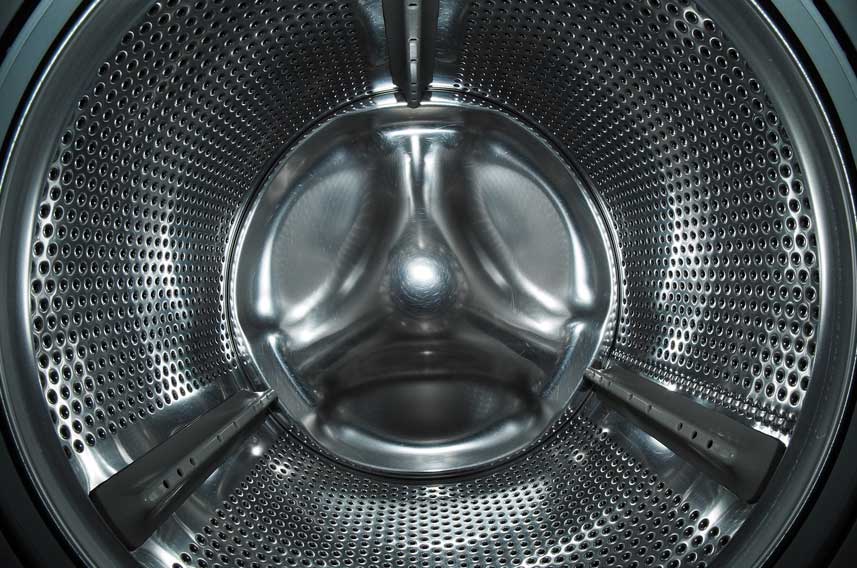
Your washing machine’s filter should be cleaned on a regular basis.
This filter is usually underneath the drum door.
This is where fluff, hair and all sorts of other residue is designed to be trapped, to prevent it from reaching the pump.
This is a great place for mold and germs to develop.
Hence it’s important to clean it often, otherwise it will make your washing machine smell.
You should check the instructions on the washing machine manual to remove the filter easily.
There will also be tips on how to best clean the filter.
It’s recommended that you place a tray or a bowl underneath the filter, or some towels, as there could be some minor leaks while you remove it.
Cleaning the Exterior
The exterior of the washing machine also needs to be cleaned.
Simply use a damp cloth and some washing-up liquid to wipe the washing machine from the outside.
As with any other home appliance, dust and stains will accumulate over time, so wiping it regularly is a must.
Make sure to dry it well with a towel afterwards.
Cleaning with Vitamin C
Citric acid and ascorbic acid, which are commonly referred to as vitamin C, are very acidic.
As a result, they are great to clean the buildup and residue associated with hard water.
Any limescale, soapy residue, detergent buildup and scum in the washing machine can be dealt with very easily with vitamin C.
Bring a kettle of water to the boil.
Then, pour it into a container and carefully dissolve around 200 grams of ascorbic acid powder, and 100 grams of citric acid powder.
This solution should be poured directly into the washing machine’s drum.
Run an empty hot wash to allow the solution to clean the washing machine thoroughly.
Getting Rid of Limescale Build Up
White vinegar is ideal to remove limescale build up.
Simply pour a cup of vinegar into the detergent drawer, then run the hot cycle.
You should also attach a water softener to the in-flow pipe if you live in an area where hard water is commonplace.
Limescale softener tablets can also be used with your washes to minimise the build-up of limescale.
Deodorising with Sodium Percarbonate
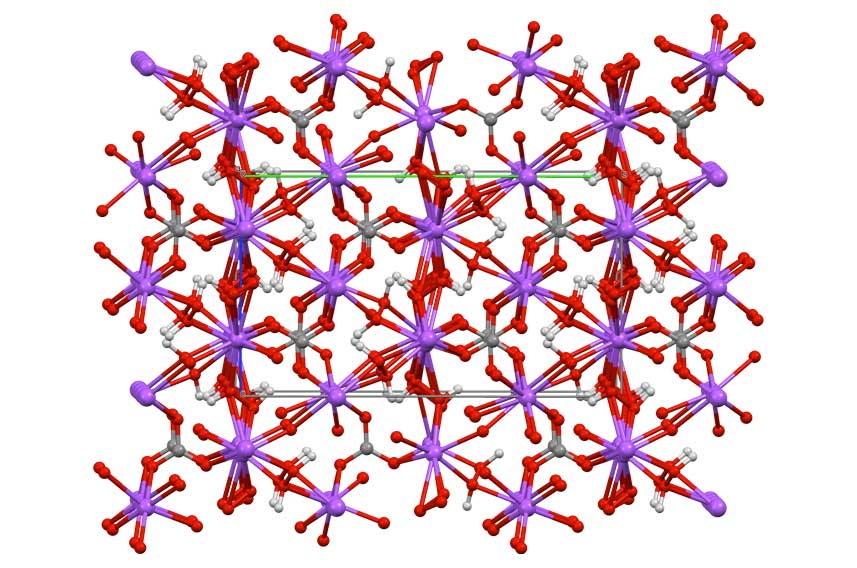
Sodium percarbonate works wonders if you would like to freshen up your washing machine.
It is sometimes also referred to as oxygen bleach powder or laundry bleach.
It’s stronger than baking soda and yet safer than liquid bleach.
Hence it’s a great option.
Sodium percarbonate comes in powdered form.
Make sure to follow instructions on the packaging for best results.
Preventing a Smelly Washing Machine
As the saying goes, prevention is better than cure.
Rather than trying to get your washing machine to be less smelly, it’s better to prevent foul odours from developing in the first place.
The following tips can help you to prevent your washing machine from getting smelly:
- Measure the detergent. If you use too much, it will lead to a buildup in the washing machine, which eventually leads to bad smells.
- The detergent drawer should be left open if possible. This will reduce the growth of mold and smells.
- Empty hot washes should be run on a regular basis, ideally once a month. Build-up and smells can be reduced considerably by doing this.
- The drum should be aired out in between washes. Make a point of drying it with a towel after a cycle.
- Keep the seals clean by checking that there’s no deposits in the crevices, as well as wiping them clean on a regular basis.
- The filter should be cleaned once every three or four months.
- Brush off excess dirt from clothes before putting them inside the machine.
- If you live in an area where there is hard water, it’s important to use a water softener or limescale softener tablets.
What to Avoid When Cleaning a Washing Machine
There are some things that one should avoid doing when cleaning a washing machine:
- Do not use too much detergent while running an empty hot cycle, as rather than cleaning the washing machine you will end up with too much foamy water which can spill out of the machine and cause damage. A service wash is best done with a powder detergent rather than a liquid one, or better still, use a specialised washing machine cleaner.
- Not using sufficiently hot water. Very high temperatures are a must for sanitisation purposes.
- Overusing vinegar is to be avoided. While vinegar is a great cleaning option, it should be used carefully as too much vinegar could cause damage to some parts of the washing machine, such as the hoses and the rubber gaskets.
Conclusion
Cleaning your washing machine should be a regular chore.
As you will have discovered, there’s various ways to go about it, and different cleaning solutions too.
A regular deep cleaning can help to improve the longevity of your washing machine, as well as ensure your clothes are being washed in a santised appliance.
Request a Callback
Recent Posts
- 10 Common Saniflo Toilet Troubleshooting Solutions 01th Jul 2025
- Importance of Personal Hygiene at Work 01th Jun 2025
- How to Clean a Toilet Brush 01th May 2025
- How to Clean Painted Walls 01th Apr 2025
- How to Get Oil Stains Out of Carpet 01th Mar 2025
- How to Clean a Fridge and Remove Bad Smells 01th Feb 2025
- How to Get Coffee Stains Out of a Carpet 01th Jan 2025
- How to Clean Gutters Correctly 01th Dec 2024
- What is PAT Testing? 01th Nov 2024
- How to Clean an Oven 01th Oct 2024


